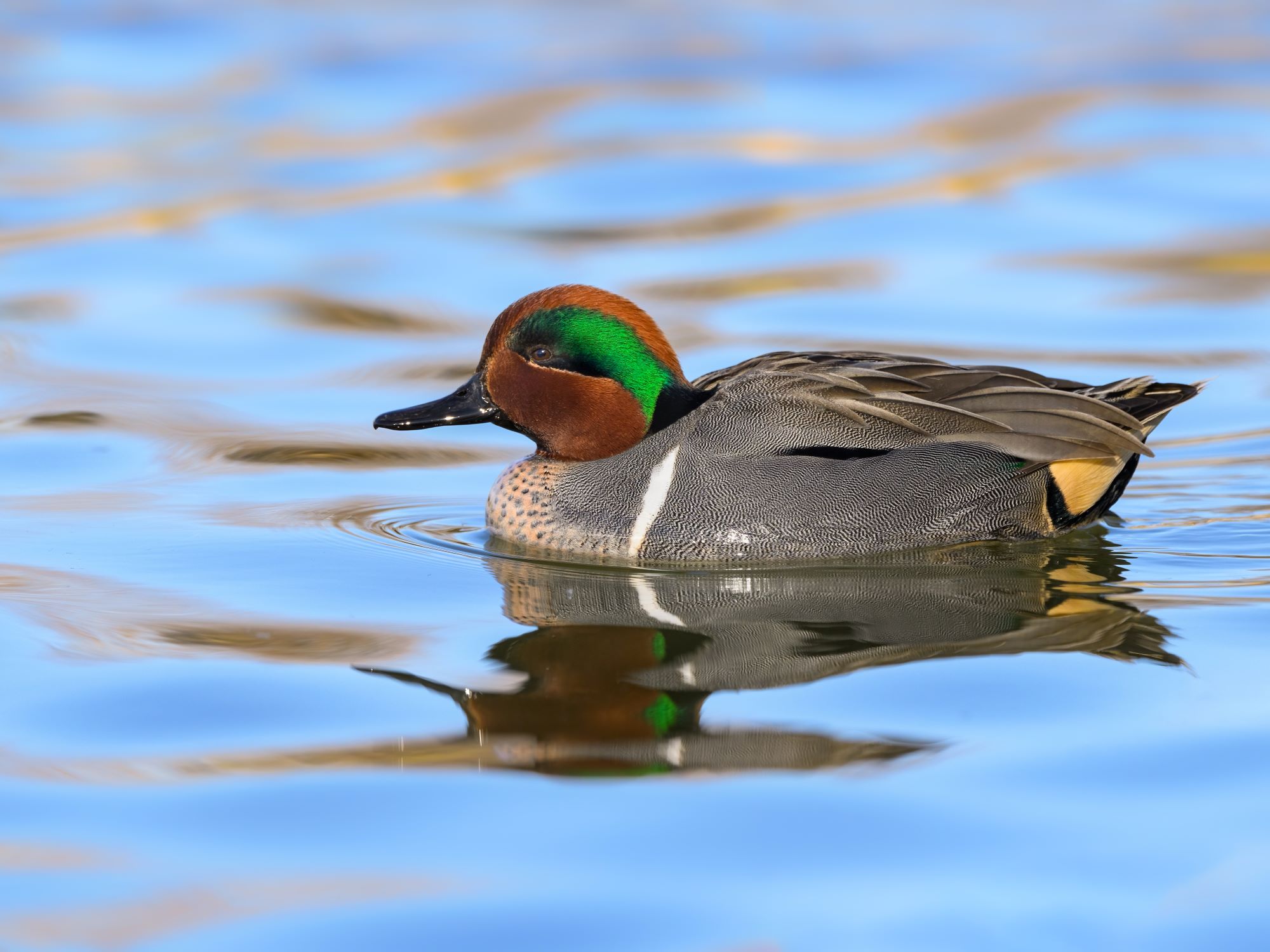
Green-winged Teals in Utah
Green-winged Teals, the smallest dabbling ducks in North America, are a common and delightful presence in Utah's diverse wetland habitats. Known scientifically as Anas crecca, these petite ducks are highly migratory and are found throughout Utah, particularly in wetlands, marshes, and along the edges of lakes and rivers. The males are easily identifiable by their striking plumage – a chestnut head with a broad green stripe running from the eye to the back of the head, and a gray body with a vertical white stripe at the side. Females and non-breeding males are more subtly colored, with mottled brown plumage that provides excellent camouflage among the marsh vegetation. In Utah, Green-winged Teals are often seen during migration in the spring and fall, and some overwinter in the milder parts of the state, adding a splash of color to the winter landscape.
One of the most fascinating aspects of Green-winged Teals is their foraging behavior. As dabbling ducks, they feed on the water's surface or tip forward to reach underwater vegetation. In Utah’s wetlands, they primarily feed on seeds and aquatic plants, but they also consume insects and small crustaceans. This diet is particularly beneficial to the wetland ecosystems, as it helps control aquatic plant and insect populations. The Green-winged Teal’s small size also allows it to forage in shallower water than larger ducks, making it a common sight in Utah’s marshes and shallow ponds.
Breeding is a significant time for Green-winged Teals in Utah. While the majority breed further north, some may choose to nest in the suitable habitats Utah offers. The female selects the nesting site, usually on the ground in dense vegetation near water. She builds a nest of grasses and lines it with down feathers. The clutch usually consists of 6 to 9 eggs, which she incubates for about three weeks. The ducklings are precocial and quickly take to the water under their mother's watchful eye.
The conservation of wetland habitats is crucial for the Green-winged Teals in Utah. These habitats are essential for providing food, nesting sites, and shelter. However, wetlands face threats from development, pollution, and climate change. Efforts to protect and restore these crucial habitats are vital for maintaining healthy populations of Green-winged Teals, as well as supporting the diversity of other wildlife species dependent on these ecosystems.
For birdwatchers and nature enthusiasts, observing Green-winged Teals in Utah is a delightful experience. Their small size, swift movements, and vibrant colors make them a favorite among birders. Their presence in Utah's wetlands, whether seen in small flocks foraging among the reeds or flying in their characteristic fast, twisting flight, adds to the richness and beauty of the state’s birdlife. The Green-winged Teal’s adaptation to diverse wetland habitats and its role in the ecological balance of these areas are a testament to the importance of conserving Utah’s natural wetlands.